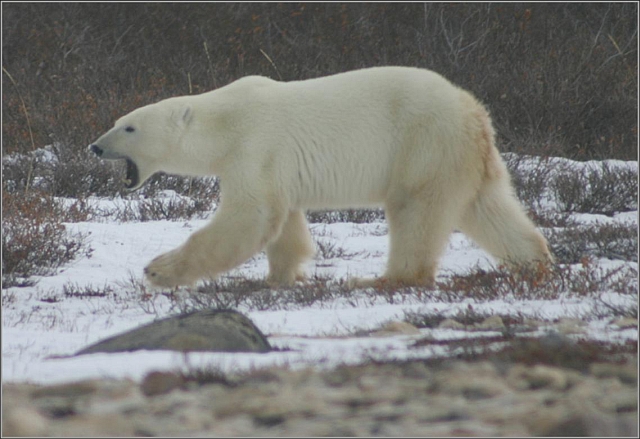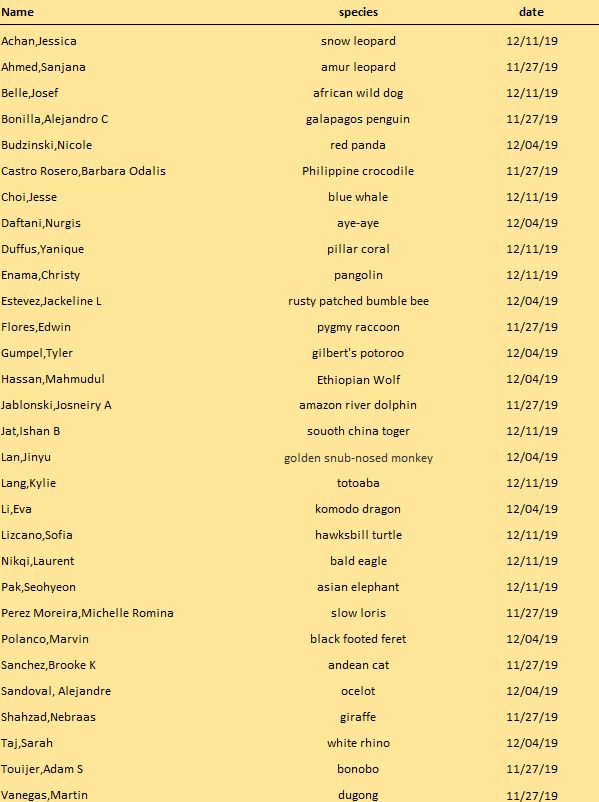|
Is this polar bear upset because global climate change is
thawing the arctic?
Could it be he is hungry since the warming makes it more difficult to
catch seals? Could it be that he is tired of humans thinking he (and his
species) can not again survive a period of warming?
This is one of many problems we will examine this Fall semester in
Conservation Biology. We will also examine how simple models coupled with
natural history can be applied to complex, real-world situations. We will
explore demography, population dynamics (including epidemics), community
dynamics (including herbivory, predation, and competition) and ecosystem
functioning (including nutrient cycling and energy flow).
We will draw on real world studies and problems involving various
animal and plant species that are in some sort of trouble. We will also
explore how hard science often has to be softened to reach conservation
goals acceptable to a diverse society.
You will gain personal experience at this by advocating for an
endangered or threatened species and part of your grade will depend on
your success.
The course meets on Wednesday from 12:30-3:15 in the Ornithology
classroom at the American Museum of Natural History. It is limited to 30
students.
The Text for the course is: Primack, RB. 2014.
Essentials of Conservation Biology, 6th Edition, Sinauer, Sunderland. **Note that the 2010 5th edition of the Primack text is adequate!!!!!
Contact
information for rf rockwell is:
212.769.5795 and [email protected]
(subject=conservation biology) to avoid the spam
pit. | 
